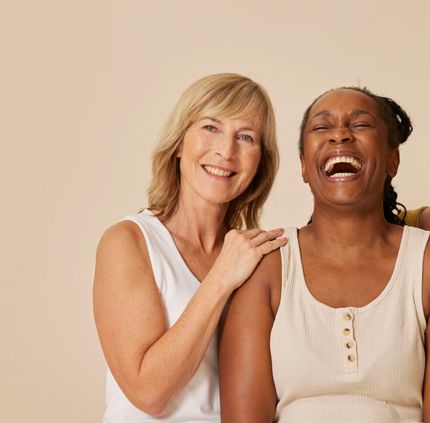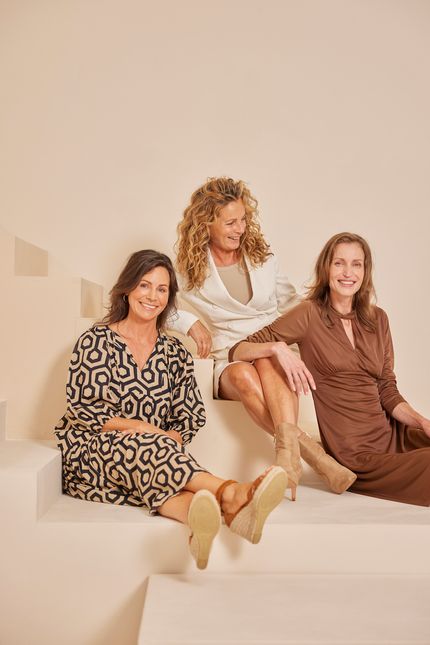

Claudia (age 52) suffered from joint pain. “Nobody knew what was causing it.”
For someone who has always been active, not being able to move around easily can be particularly distressing. Claudia is 52 years old and works as a physical education (PE) teacher. She has been into sports all her life. Besides having an active job, she loves cycling and hiking and regularly takes long walks through nature with her husband. Until her joints began to ache. Claudia: “I've always loved being physically active. I did not understand why my body wasn't functioning effortlessly anymore.”
It started with mild symptoms
The first signs were mild. Occasional achy joints, especially after long walks. But the symptoms gradually got worse. “My knees felt stiff, my hands would ache when holding the handlebar, and my shoulders seemed to be losing their normal smoothness of motion.”
As someone with such an active lifestyle, Claudia couldn't understand why she was having joint pain out of nowhere. She went to her GP, who referred her to an orthopaedic specialist. “He referred me to a physiotherapist,” Claudia laughs. “He thought the symptoms resulted from overuse or poor posture.” But as a PE teacher with training in physical development and motor skills, this seemed unlikely to Claudia.
Physiotherapy
Nevertheless, she made an appointment with a physiotherapist, who asked her to do specific exercises – which she did without complaining. “I tried many different things to relieve the pain, including massage. Although it was relaxing and provided temporary relief, the pain always came back after a few days.”
Teaching PE
Meanwhile, the symptoms were making it increasingly difficult to do her job. “I liked to participate in gym class, but this was becoming a problem. I just couldn't trust my body anymore. Naturally, this was extremely frustrating. The fact that I had to recover for days after going on hikes with my husband certainly did not help with my mood issues.”
What followed was a struggle with her body. “Despite the physiotherapist's tips, I was in constant pain. I wasn’t able to function at work yet all I heard from doctors was ‘it's your age, you're fine… this is what happens’. I don’t necessarily disagree with that. I know I’m getting older. My body is less resilient than it used to be, I get that. But this felt different.”
“I decided to do my own research”
Claudia refused to accept that she had to live like this. Determined to find an answer, she turned to the Internet. “In my search, I came across stories from menopausal women who suffered from joint pain. I was completely taken aback by the fact that joint pain was such a common symptom of menopause! I did not have any other symptoms, so menopause never crossed my mind.”
The more she read about menopause, the more she learned about the effects of hormonal changes on the body. “I had no idea that oestrogen is directly correlated to joint health,” says Claudia. “Apparently, reducing oestrogen levels can make you more prone to joint issues. It was like the pieces of the puzzle finally clicked together.”
Back to the doctor’s office
“I went back to my GP and he confirmed that joint pain is quite common among menopausal women,” she continues. “So we decided to try hormone therapy. It’s made a world of difference for me. After a few months of therapy, I felt reborn.”
For Claudia, hormone therapy changed everything for the better. “I was able to teach without being in pain at the end of the day. Because of this, I was in a better mood at home, and it was lovely to be able to go for walks with my husband again.”
World of difference
Hormone therapy was a godsend for Claudia. “I had been toying with the idea to work less hours, that idea went out of the window pretty quickly. My job is my passion, and now I appreciate it even more.”
Claudia does struggle sometimes with the fact that valuable time was lost because nobody made the connection with menopause. “I still find that frustrating. There’s a bit of a taboo about talking about menopause openly, which is why I've decided to share my story. I sincerely hope that women reading this will think: ‘This sounds like me, perhaps I should see my doctor.”

Let's bring menopause out of the shadows. A great deal of pain and discomfort can be prevented with more awareness.

More experience stories











